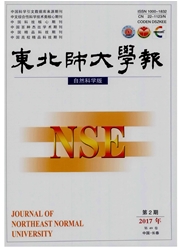

 中文摘要:
中文摘要:
对苏格兰邓佛姆林郡4个城市可持续排水系统(sustainable urban drainagesystem,SUDS)的理化指标及底栖无脊椎动物群落结构的时空变化特征进行了分析.结果表明:底栖无脊椎动物的丰富度及敏感种比重为人工湿地〉3号滞留池〉2号滞留池〉1号滞留池,底栖无脊椎动物的丰富度与敏感种比重与环境要素显著相关,SUDS的深度、流域内透水斑块比重和污染物输入量对底栖动物群落结构及污染物的移除率有显著影响.随时间的延长,外来种逐渐替代了人工湿地的本地种.
 英文摘要:
英文摘要:
The temporal and spatial features of physio-chemical indies and the structure of benthic invertebrates of 4 SUDS ponds within Dunfermline were analyzed,which provided suggestions for the SUDS design and construction of China. Results showed that diversity and the ratio of sensitive of benthic invertebrates were Wetland〉Pond 3〉Pond 2〉Pond 1. The structure of benthic invertebrates was significantly negative correlated with total organic nitrogen and conductivity. Moreover, benthic invertebrates were significantly correlated with environmental factors. The depth, nutrient input and pervious patch ratio of SUDS had great influences on the structure of benthic invertebrates. In wetland, exotic species would gradually replace native species.
 同期刊论文项目
同期刊论文项目
 同项目期刊论文
同项目期刊论文
 期刊信息
期刊信息
